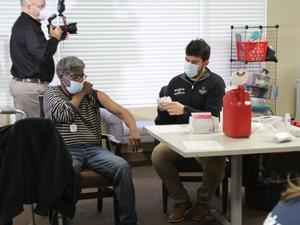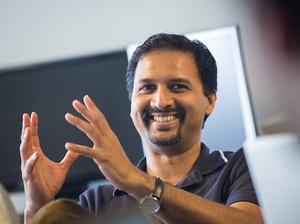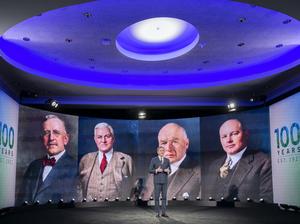
State and local leaders on Monday unveiled the Cleveland Innovation District — what they see as a generational opportunity to invest in the city's leading health care, research and education institutions to put the city on the world map for virus and pathogen innovation.
The creation of an innovation district mimics the one launched in Cincinnati in March 2020, which officials said would serve as a "blueprint" for the state. Cincinnati's district is anchored by the University of Cincinnati and Cincinnati Children's Hospital, and is expected to help spark $3 billion in annual economic impact.
Cleveland Clinic, University Hospitals Cleveland, MetroHealth, Case Western Reserve University and Cleveland State University will collaborate to create the Global Center for Pathogen Research & Human Health on the Clinic's main campus. That project will serve as the district's anchor.
Ohio is committing $265 million in funding from its Development Services Agency and private funding from JobsOhio, Gov. Mike DeWine said during a Monday press conference.
Earlier Monday, Cleveland Clinic Foundation won $35 million in Ohio Job Creation Tax credits for the proposed center, which expects to create 1,000 full-time positions that generate $100 million in annual payroll over 15 years, according to the tax credit authority.
And Cleveland Clinic is committing an additional $300 million, the Clinic's CEO Tom Mihaljevic said during the press conference.
The center will be built near Cleveland Clinic's Lerner Research Institute at E. 96th Street and Carnegie Avenue.
Work on the center would start immediately and "make major impact in the next 2-to-3 years," Mihaljevic said.
The center for research, innovation and workforce development could create more than 20,000 Ohio jobs in 10 years, DeWine said.
The center also could have a $3 billion economic impact on the state over the next decade, the governor said.
The center would aim not only at advancing the world's knowledge about the coronavirus that causes Covid-19 but also preventing future pandemics and infectious diseases such as tuberculosis, hepatitis and malaria, said Dr. Cliff Megerian, incoming CEO at University Hospitals, during the press conference.
It will require the collaboration of three competing hospital systems and two competing universities.
"Make no mistake. This moment is unprecedented and transformational," said Scott Cowen, interim president for Case Western Reserve University, said during the conference.
"Until now, these five institutions haven’t come together in such a substantive and meaningful way."
The center also would be aimed at educating the skilled workforce of tomorrow, Dr. Akram Boutros, MetroHealth's CEO, said during the conference.
Harlan Sands, president of Cleveland State, agreed.
"The priorities of this program driving inclusive growth in innovation, building educational pathways and taking away barriers to economic mobility are core to our mission and are part of our DNA," Sands said during the conference.






